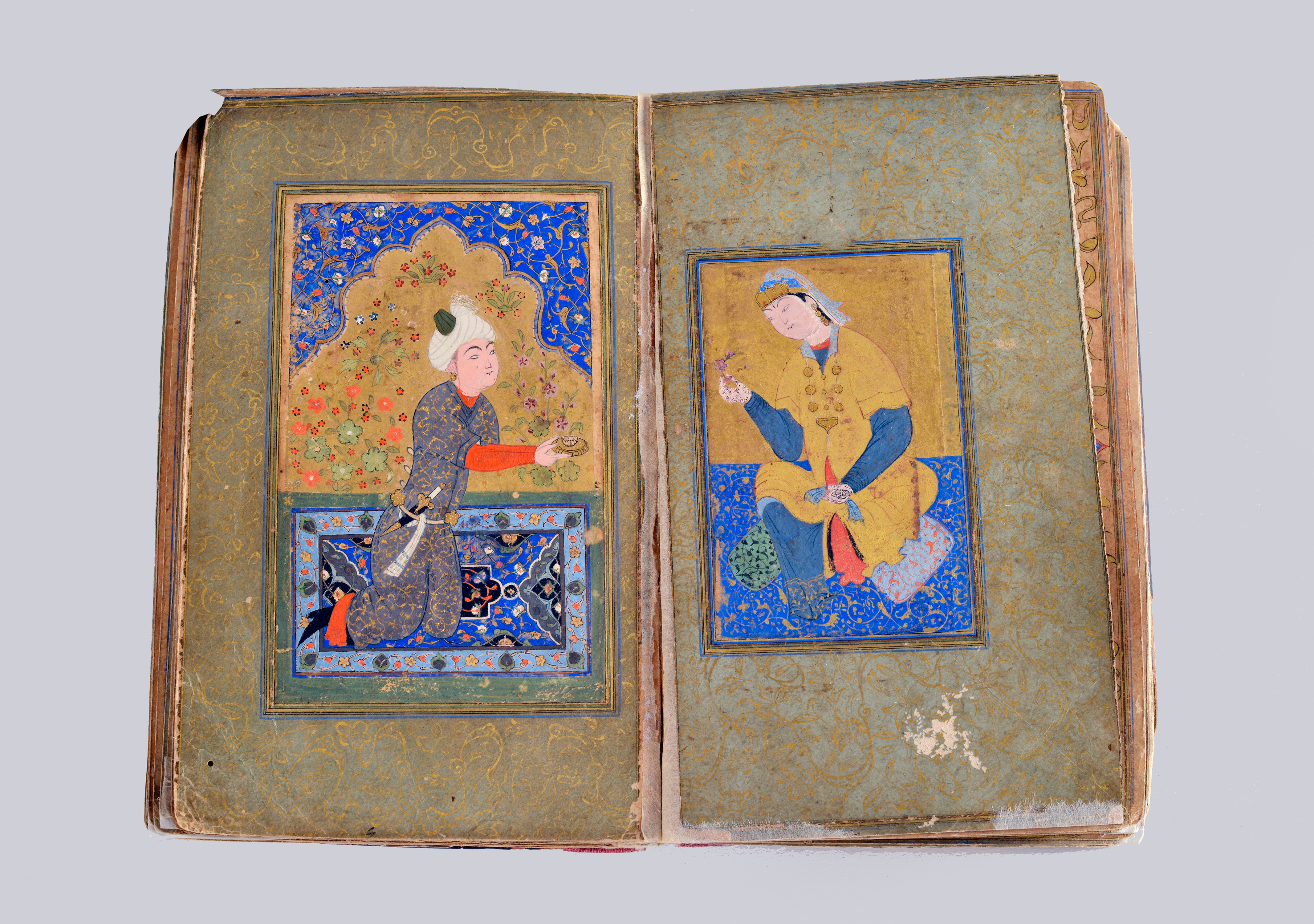Discover, Learn, immerse, Connect
The Bayaz
This unique manuscript is from the fourteenth century and was last used in Iran. This work of art has been put together using ink and watercolour on paper that is 16.5cm and 10.5 cm in size.
'Bayaz' literally means 'white'. It usually designates a small paper notepad with covers often made of leather which open lengthwise. This particular Bayaz is one of the rarest items on display at the National Museum as it contains one of the only visual depictions of Hamida Banu Begum along with the imprint of her official seal. Hamida Banu Begum, the wife of Nasir-ud-Din Muhammad better known by his regnal name Humayun, was one of the few Mughal women to have a library of her own. This manuscript was produced under her patronage. Her son Jalal-ud-din Akbar would collect upwards of twenty four thousand volumes in his imperial library. This Bayaz moved from one royal household to another when it was presented to Shah Tehmasp of Persia. The Shah of the Safavid empire was a crucial political ally of the Mughals as he had provided Humayun refuge when Sher Shah Suri defeated him in the Battle of Chausa in 1539 and drove him out of the country. Only a book produced under the patronage of the Queen herself would be considered worthy of being a gift to the Shah.
The manuscript is written in Persian and its script is tasthaliq. The paper used for it was manufactured in Central Asia and Iran. This particular copy of the manuscript was presented to Shah of Persia, Tehmasp of the Safavid Dynasty.
The cover bears a portrait of Hamida Banu Begum who was the wife of Humayun and mother of Akbar. It is decorated with gold and lapis lazuli. The sar-e-lauh of this manuscript also shows the intricate design of foliage.
 Government of India
Government of India



